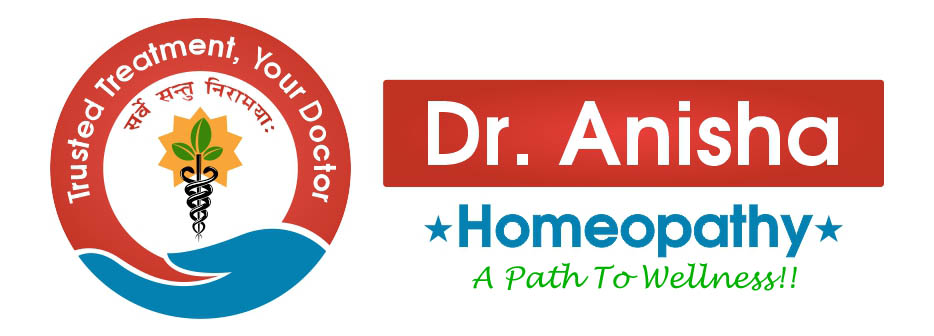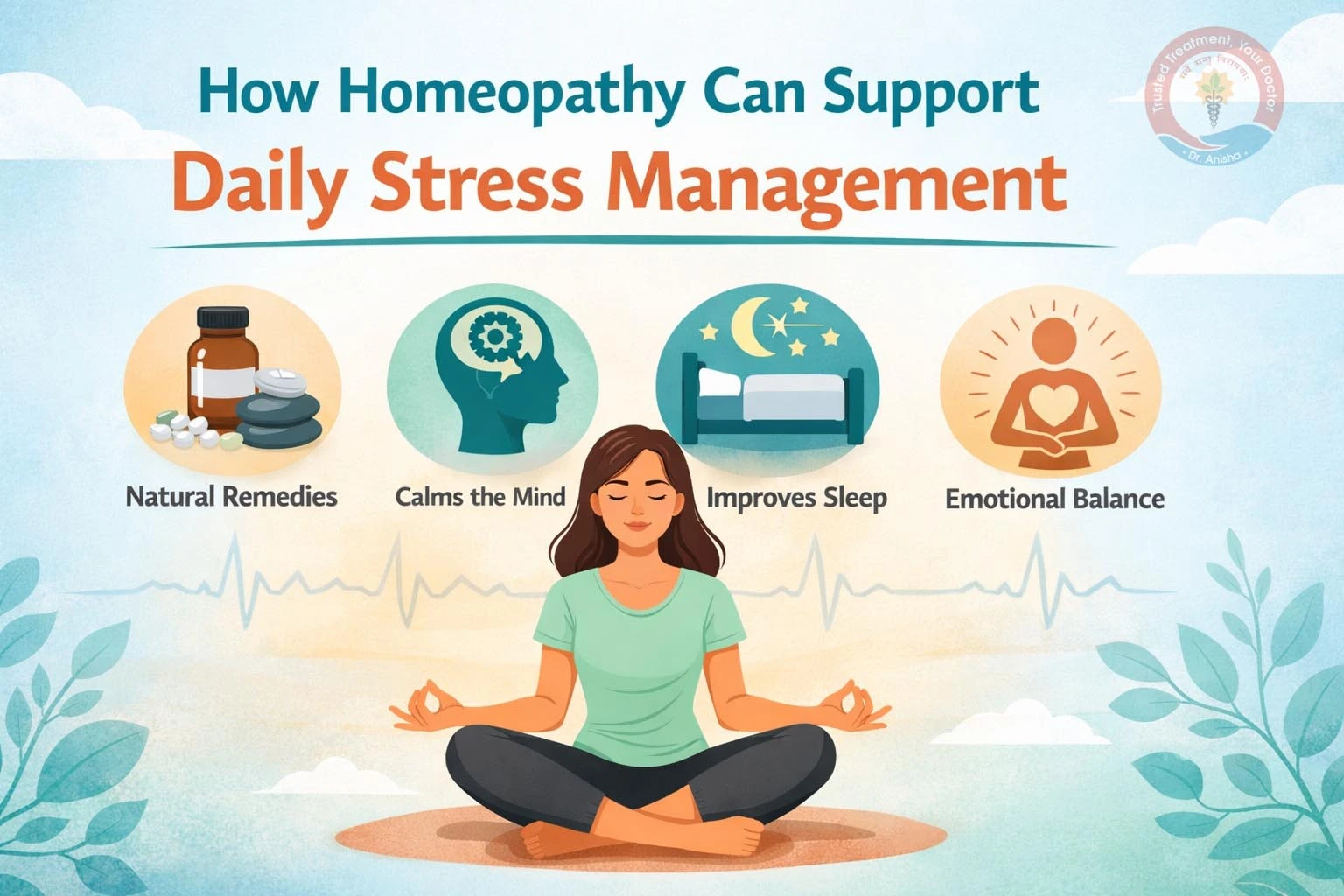
Homeopathic Clinical Management Of Dengue Fever
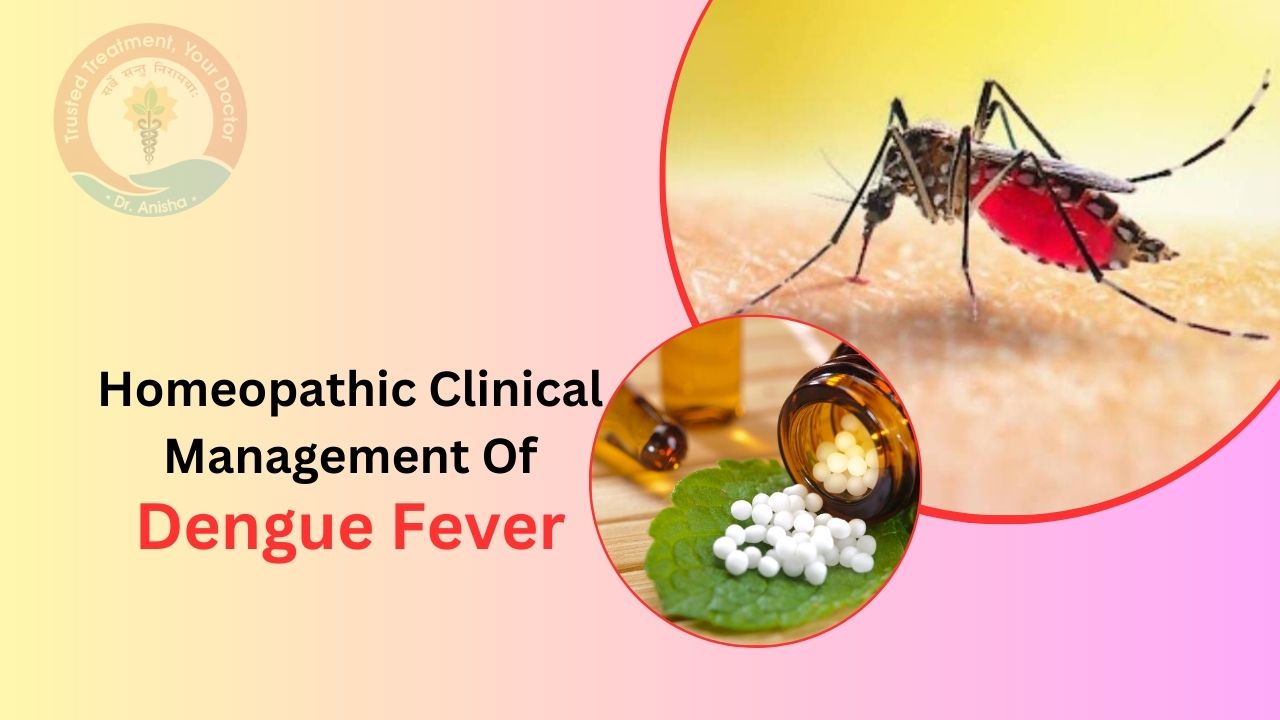
Homeopathic Clinical Management Of Dengue Fever
INTRODUCTION
Dengue fever, also known as breakbone fever, is an infectious tropical disease caused by the dengue virus. Symptoms include fever, headache, muscle and joint pains, and a characteristic skin rash. In a small proportion of cases the disease develops into the life-threatening dengue hemorrhagic fever, resulting in bleeding, low levels of blood platelets and plasma leakage, or into dengue shock syndrome, where dangerously low blood pressure occurs.
Homoeopathy has a long record of success in the treatment of epidemics and recent experiences in Brazil and India favour its usefulness in the management of dengue. The treatment is holistic and individualized and selection of homoeopathic medicines depends upon the individual response to infection, severity of disease and clinical presentation of the case. Homoeopathy has a potential to reduce the intensity of fever, headache, body ache, weakness, loss of appetite, nausea and other associated symptoms and, also reduce the probability of developing shock, hemorrhage and other complications. The homoeopathic intervention can be preventive for unaffected/high risk population (relatives, neighbours of diagnosed patient) as well as curative for persons already suffering from dengue.
ABOUT THE DENGUE EPIDEMIC
Dengue is the most rapidly spreading mosquito borne viral disease in the world with wide clinical spectrum. In the last 50 years, incidence has increased 30-fold with increasing geographic expansion to new countries and, in the present decade, from urban to rural settings. An estimated 50 million dengue infections occur annually and over 2.5 billion people (about 40% of the world’s population) are now at risk from dengue. An estimated 500000 people with severe dengue require hospitalization each year, a large proportion of whom are children. About 2.5% of those affected die.
Salient points
- DF is an acute viral infection characterized by high fever, severe headache & intense body ache
- It can be caused by any one of the four types of dengue viruses; DEN-1, DEN-2, DEN-3 & DEN-4
- Infection may lead to ‘classical dengue fever’ (DF) or DHF with or without out shock
- DHF is a more severe form of disease, which may cause death
- Recovery from infection by one serotype provides lifelong immunity against that particular serotype
- However, cross-immunity to the other serotypes after recovery is only partial and temporary
- It can be more severe and fatal in children
- Homoeopathic intervention can be used along with standard treatment for clinical management
- Homoeopathic genus epidemicus can be identified for its prevention
Mosquito – Dengue Carrier
Aedes mosquitoes are the carrier of the dengue virus. These mosquitoes can be easily distinguished as they are larger in size and have black and white stripes on their body, so they are sometimes called tiger mosquitoes. The mosquito breeds in artificial accumulation of water (Figure 1) in and around human dwellings, such as water found in discarded tins, broken bottles, fire buckets, flower pots, coconut shells, earthen pots, tree holes etc. during & immediately after the rainy season.
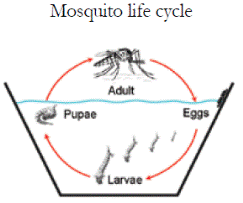
Figure 1 : Mosquito life cycle in artificial accumulation of water
It takes about 7 to 8 days to develop the virus in its body and transmit the disease.
They usually bite during the daytime.
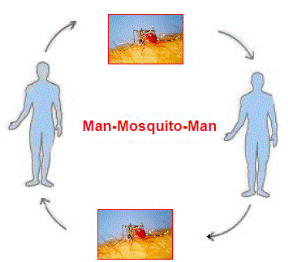
Figure 2 : Transmission cycle
The female Aedes aegypti usually becomes infected with dengue virus when it takes
blood meal from a person during febrile (viremia) phase of dengue illness. After an
extrinsic incubation period of 8 to 10 days, the mosquito becomes infected and the
virus is transmitted when the infective mosquito bites and injects the saliva into the
person (Figure 2).
CLINICAL DESCRIPTION
Incubation period
The period from the entry of virus through mosquito bite to appearance of first sign/ symptoms is 3-10 days (commonly 5-6 days).
Dengue fever
An acute febrile illness of 2-7 days duration with two or more of the following manifestations:
- Severe headache
- Retro-orbital pain – Pain behind the eyes which worsens with eye movement
- Myalgia
- Arthralgia
- Rash – Flushing over chest and upper limbs
- Mild haemorrhagic manifestations (petechiae, mucous membrane bleeding)
Fever and other symptoms often follow a ‘saddleback’ sequence that is a brief remission of fever after the third day followed by rise in temperature again after 1-2 days. The fever lasts for 5-7 days after which the recovery is usually complete. Fever may be associated with nausea and vomiting.
Dengue Haemorrhagic Fever
Dengue Shock Syndrome
All the above criteria of DHF plus evidence of circulatory failure manifested by rapid, weak pulse and narrow pulse pressure (< 20 mm Hg) or hypotension for age, cold and clammy skin and restlessness.
It is more common in cases with mixed infection of more than one type of dengue virus. This is due to hypersensitivity which develops to one strain can trigger if there are more than one strain of virus at the same time. Co-existing conditions that may make dengue or its management more complicated include pregnancy, infancy, old age, obesity, diabetes mellitus, renal failure, chronic haemolytic diseases, etc.
Course of Illness
After the incubation period, the illness begins abruptly and is followed by the three phases — febrile, critical and recovery (Figure 3).
- Febrile phase
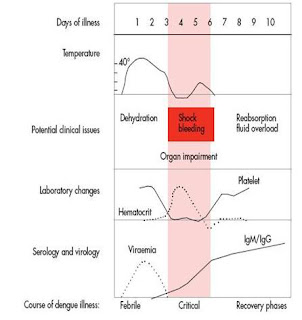
- Critical phase
Shock occurs when a critical volume of plasma is lost through leakage. It is often preceded by warning signs. The body temperature may be subnormal when shock occurs. With prolonged shock, the consequent organ hypoperfusion results in progressive organ impairment, metabolic acidosis and disseminated intravascular coagulation.
- Recovery phase
If the patient survives the 24–48 hour critical phase, a gradual re-absorption of extra-vascular compartment fluid takes place in the following 48–72 hours. General well-being improves, appetite returns, gastrointestinal symptoms abate, haemodynamic status stabilizes and diuresis ensues. The haematocrit stabilizes or may be lower due to the dilutional effect of reabsorbed fluid. White blood cell count usually starts to rise soon after defervescence but the recovery of platelet count is typically later than that of white blood cell count.
DIAGNOSIS
| Suspected : A case compatible with the clinical description |
| Probable : A case compatible with the clinical description with one or more of the following: |
| Supportive serology (reciprocal haemagglutination – inhibition titre, comparable IgG ELISA titre or positive IgM antibody test in late acute or convalescent-phase serum specimens) |
| Occurrence at same location and time as other confirmed cases of dengue fever |
| Confirmed : A case compatible with the clinical description that is laboratory confirmed |
| Laboratory criteria for diagnosis |
| One or more of the following: |
| Isolation of the dengue virus from serum, plasma, leucocytes |
| Demonstration of a fourfold or greater change in reciprocal IgG or IgM antibody titres to one or more dengue virus antigen in paired serum samples. |
| Demonstration of dengue virus antigen in serum samples by ELISA. |
| Detection of viral genomic sequences in serum or CSF samples by polymerase chain reaction (PCR) |
MANAGEMENT
- Indications for domiciliary management:
- No tachycardia
- No hypotension
- No narrowing of pulse pressure
- No bleeding
- Platelet count> 100, 000/cumm
- Laboratory investigations for assessment
-
Complete blood count: haemoglobin, haematocrit, total leukocyte count, differential leukocyte count, platelet count, peripheral blood smear
-
In epidemic situation, for every patient reporting with fever, it is recommended, unless some other cause for the fever is identified.
-
- Specific laboratory investigation for diagnosis
-
Serology: to be done on or after day 5 by Mac ELISA (in an outbreak all suspected patients of dengue need not undergo serology for purpose of clinical management).
-
General Management
- Rehydration plays a major role and all efforts must be directed to maintain adequate fluid intake. Encourage oral intake of oral rehydration solution (ORS), water, fruit juice, lime water, coconut water and other fluids containing electrolytes and sugar to replace losses from fever and vomiting. Adequate oral fluid intake may be able to reduce the number of hospitalizations. [Caution: fluids containing sugar/glucose may exacerbate hyperglycaemia of physiological stress from dengue and diabetes mellitus.]
- Patients who are not able to tolerate oral fluids need intravenous fluid therapy.
- Advise patients to take adequate bed rest and continue on normal regular diet.
- In case of high fever, advise for continuous cold sponging, till it recovers. If it is not controlled, suitable antipyretics such as paracetamol can also be given. The interval of paracetamol dosing should not be less than six hours. Aspirin / Disprin/acetyl-salicyclic acid /ibuprofen or other non-steroidal anti-inflammatory agents (NSAIDs) should not be given, as these may aggravate gastritis or bleeding.
- Instruct the care-givers that the patient should be brought to hospital immediately if any of the warning signs occur.
Warning signs needing immediate attention
- Severe and continuous pain in abdomen
- Bleeding from the nose, mouth and gums or skin bruising
- Frequent vomiting with or without blood
- Black stools, like coal tar
- Excessive thirst (dry mouth)
- Pale, cold skin, cold and clammy extremities
- Restlessness, or excessive sleepiness/drowsiness
- Clinical deterioration with reappearance of fever
- Inability to tolerate oral fluid
- Not passing urine for more than 6 hours
Follow up
Standard care of patients with DHF/DSS
-
- Consider admission in hospital of patient showing the following symptoms and signs
- Bleeding from any site
- Persistent high grade fever (40°C and above)
-
Severe abdominal pain, refusal to take orally/poor intake, persistent vomiting, any signs of dehydration.
-
Impending circulatory failure – tachycardia, postural hypotension, narrow pulse pressure (<20 mmHg, with rising dialostic pressure e.g. 100/90 mm/Hg), increased capillary refilling time – 3 secs (paediatric age group)
-
Neurological abnormalities – restlessness, seizures, excessive crying (young infant), altered sensorium and behavioral changes, severe and persistent headache.
- Drop in temperature and/or rapid deterioration in general condition
- Shock-cold clammy skin, hypotension/narrow pulse pressure, tachypnoea
However, a patient may remain fully conscious until late state.
- Consider admission in hospital of patient showing the following symptoms and signs
Indoor management of patients
- Investigations for indoor patients
- Chest X-Ray : Right lateral decubitus one day after temperature drops.
- Ultra-sonography abdomen and chest
- Blood Biochemistry: Serum electrolytes, kidney function test and liver function test if required.
-
Stool examination for occult blood, pleural fluid tapping and Blood culture for excluding other causes may be done.
- Indications of red cell transfusion
- Loss of blood (over blood) – 10% of or more of total blood volume – Preferably whole blood/component to be used
- Refractory shock despite adequate fluid administration and declining haematocrit
- replacement volume should be 10 ml/kg body wt at a time and coagulogram should be done.
- If fluid overload is present packed cells are to be given.
- Indications for platelet transfusion
- In general there is no need to give prophylactic platelet even when the platelet count is at <20,000/cumm
- Prophylactic platelet transfusion may be given at level of <10,000/cumm in absence of bleeding manifestations
- Prolonged shock, with coagulopathy and abnormal coagulogram
- In case of systemic massive bleeding, platelet transfusion may be needed in addition to red cell transfusion.
-
Use of fresh frozen plasma/cryoprecipitate in coagulopathy with bleeding as per advice of physician and patient condition in the hospital.
Homoeopathic Medicines
For Dengue Fever:
For Dengue Haemorrhagic Fever:
|
Eupatorium perfoliatum The chief indication is severe pains in the bones as if broken all over. Other prominent indications of the drug are; chill coming between 7 to 9 a.m., vomiting of bile between chill and heat and insatiable thirst before chill. Occipital pain after lying down with a sense of weight. Perspiration relieves all symptoms except headache. Tongue yellow coated with cracks in the corner of mouth. Bryonia is the nearest analogue, having free sweat but pains keep patient quiet; while eupatorium has scanty sweat and pains make patient restless. Bryonia alba Gradual onset of symptoms. Fever with chillness predominating, frequently with heat of head, red cheeks and thirst. Very irritable, inclined to be angry. Indicated in complaints with dryness of mucous membranes; sluggish and stitching pains, aggravated by any motion. Dry mouth with tongue coated white in the middle. Great thirst for large quantities of cold water at long intervals. Sweat relieves fever. Pulse full, hard, tense and quick. There is intense headache, dull, stupefying with a sensation as if the head would burst through forehead. Constipation due to dryness of mucous membranes and complete inactivity of the rectum and stool expelled with much straining. Gelsemium Fever accompanied with dizziness, drowsiness, dullness and trembling. Patients want to be held because he shakes so much. Chill without thirst. Pulse is slow while quiet, but greatly accelerated on motion. Pain in forehead behind eyes. The patient wants to lie with head raised upon a high pillow, and lie perfectly still, sometimes the headache is relieved by a profuse flow of urine. Desire to be quiet, to be left alone; does not wish to speak or have any one near her, even if the person be silent. Rhus toxicodendron Indicated in slow fevers when sensorium becomes cloudy or stupefaction sets in, with low grade of muttering delirium. Fever with weakness of the whole body with desire to stretch the limbs. Great restlessness, cannot remain in bed, cannot stay long in one position. Dry and brown tongue or red. Triangular red tip of tongue. Sickness at the stomach, loss of appetite, aversion for food, great thirst. Cough during chill, dry teasing fatiguing. Urticaria during heat. Aconitum napellus Indicated in the beginning of the disease when complaints are sudden, violent, with anguish and restlessness. Heat with burning thirst for large quantities of cold water, hard, full and frequent pulse, anxious impatience, inappeasable, beside himself, tossing about with agony, becomes intolerable towards evening and on going to sleep. To be prescribed for fever with skin dry and hot, face red, or pale and red alternately. Cold stage is most marked. Cold sweat and icy coldness of the face. Coldness and heat alternate. Sweat drenching on parts lain on; relieving all symptoms. Belladonna Sudden onset of symptoms. Fever accompanied with heat redness throbbing and burning. No thirst with fever. Cool extremities and throbbing headache. Pain in forehead behind eyes. The fever is worse at night. Fever with delirium and throbbing headache, eyes red & glistening, the skin is hot and burning. Pains comes and goes suddenly. Fever may be followed by a profuse sweat which brings no relief. Arsenicum album High temperature. Great heat around 3 a.m. Periodicity marked with marked weakness. Cold sweats, marked exhaustion. Delirium; worse after midnight. Great mental restlessness. Disproportionate weakness with rapid sinking of vital forces, fainting. Unquenchable thirst, drinks water little and often. Ferrum phosphoricum Remedy for first stage of fever. Sensitive, pale, anemic with easy flushing of face. High fever, skin hot and dry, quick pulse, thirst increased. Chill daily at 1 p.m., chill returning at the same time every day. This remedy stands midway between Aconite & Gelsemium in febrile conditions, may be differentiated by pulse which is full & bounding under Aconite while under Gelsemium, it is soft and flowing. No drowsiness & dullness of Gelsemium, no anxious restlessness of aconite. It can be used frequently in biochemic doses in 3x/6x potencies in all cases for the control and support. Ipecacuanha Fever accompanied with gastric disturbances. Persistent nausea in one or all stages. Constant nausea is not relieved even by vomiting. Slightest chill with much heat, nausea, vomiting, and dyspnoea. Indicated when tongue is clean and there is thirstlessness and bright red hemorrhages. Backache with short chill, long fever, heat, usually with thirst, headache, nausea and cough. Natrum muriaticum Fever appears with chill between 9 and 11 a.m. Violent thirst which increases with fever. Coldness of body and continuous chilliness very marked, sweats on every exertion. Fever blisters around mouth. Tongue mapped. Deep crack in the middle of lower lip. Fever, headache and all other symptoms are relieved by sweating. Sweats on every exertion. Weakness marked in the morning, in bed. Nux vomica Cold stage predominates, paroxysms anticipated in the morning. Chilly on least movement , from being uncovered ,must be covered in every stage of fever, chill heat or sweat. Great heat, whole body burning hot, faces red and hot, yet patient cannot move or uncover without being chilly. Perspiration sour, only on one side of the body. Aching in limbs and back, and gastric symptoms. Over sensitiveness to external influences; to odour, noise, light or music. Frequent desire for stool, ineffectual. |
|
These medicines given on symptomatic basis help in reducing the haemorrhagic tendency and can improve platelet counts. These medicines should always be used along with the standard care as detailed. Crotalus horridus Haemorrhagic diathesis; Blood flows from venous orifices, gums, nose, skin, nails etc. Blood dark fluid that forms no clots. Cold sweats. Secale cornutum It is characterized by slow persistent oozing, dark, thin, dark and offensive bleeding worse from motion. Carbo vegetabilis Continous passive haemorrhages ,the skin is cold and bluish, pulse , rapid & weak, patient wants to be fanned, burning pains across sacrum and lower spine, persistent nosebleed with sunken face. Death seems near and its close proximity indicates Carbo veg. Lachesis Bleeds easily and profusely. Blood is more fluid, dark and non-coagulable. Blood is like charred straw. Hemorrhagic tendency is marked. Ipecac Profuse bright red bleeding from any part and is accompanied by nausea. The surface of body may be cold and covered with cold sweat. Septic hemorrhages. Hamamelis Passive venous hemorrhages , when the parts feel sore and bruised and the patient is greatly exhausted by the flow. The blood is usually dark. Ferrum metallicum The Haemorrhages is bright red mixed with clots, and gushing. It thus stands between Cinchona and Ipecac. With Ferrum there is much flushing of the face. Cinchona officinalis Debility from exhausting discharges, from loss of vital fluids, Periodicity is most marked. All fever stages are well marked. Chill generally in forenoon, commencing in breast; thirst before chill, and little and often. Debilitating night-sweats. Free perspiration caused by every little exertion, especially on single parts. Millefolium An invaluable remedy for various types of hæmorrhages; blood bright red. Hæmorrhage from bowels , lungs & uterus. Bleeding from exertion. Phosphorus Disorganizes the blood, causing fatty degeneration of blood vessels and every tissue and organ of the body and thus gives rise to hæmorrhages. Chilly every evening. Cold knees at night. Adynamic with lack of thirst, but unnatural hunger. Hectic fever, with small, quick pulse; viscid night-sweats. Stupid delirium. Profuse perspiration. Sulphuric acidum Haemorrhages from every outlet of the body, with ecchymosed spots under the skin. Extreme weakness, with sense of internal trembling, which is not observable to others. |
| Grade | Symptoms/signs | Laboratory findings | Management | |
| DF | Fever with two or more following Retro-orbital pain Myalgia Arthralgia |
Leucopenia, Thrombocytopenia | General management and indicated homoeopathic medicine | |
| DHF | I | Above criteria for DF plus positive tourniquet test, evidence of plasma leakage | Thrombocytopenia: Platelet count less than 100,000/cu.mm. Haematocrit rise 20% or more | Standard care with add on indicated homoeopathic medicine |
| DHF | II | Above signs and symptoms plus some evidence of spontaneous bleeding in skin or other organs (Black tarry stools, epistaxis, bleeding from gums, etc) and abdominal pain | Thrombocytopenia: platelet count less than 100,000/cu.mm. Haematocrit rise 20% or more | |
| DHF | III | Above signs and symptoms plus circulating failure (weak rapid pulse, pulse pressure < 20mm Hg or high diastolic pressure, cold clammy skin and restlessness | Thrombocytopenia: Platelet count less than 100,000/cumm Haematocrit rise 20% or more | |
| DHF | IV | Profound shock with undetectable blood pressure or pulse | Thrombocytopenia: Platelet count less than 100,000/cumm Haematocrit rise 20% or more |
PREVENTION
- Personal prophylactic measures
- Use mosquito repellent creams, liquids, coils, mats, etc.
- Wear full sleeve shirts and full pants with socks
- Use bed nets for sleeping infants and young children to prevent mosquito bite
- Environmental management & source reduction methods
- Identify & eliminate mosquito breeding sources
- Prevent collection of water on roof tops, porticos and sunshades
- Properly cover stored water
- Frequently change water in water pots, flower vases, water coolers, etc.
- Waste must be disposed properly and should not be allowed to collect
- Biological & Chemical control for control of mosquitoes breeding
- Use larvivorous fishes in ornamental tanks, fountains, etc.
- Use biocides or chemical larvicides for control of mosquitoes breeding
- Aerosol space spray
- Health education
- Impart knowledge to common people regarding measures to reduce vector breeding and safeguards for preventing mosquito bites.
Homoeopathic medicine as preventive
-
The totality of symptoms (TOS) related to the current epidemic is formulated by in depth study of all the signs and symptoms of minimum 20-30 cases preferably from different regions to cover the complete spectrum of diseases in the community.
-
The TOS to be thoroughly studied and following appropriate repertorization process, a group of medicines are to be identified. These medicines are required to be given to these cases on the basis of individualization. The medicine, which is most frequently indicated and has potential of providing the quick and favorable response to the patient, shall be the genus epidemicus.
-
Drugs commonly found indicated as genus epidemicus in the past are Eupatorium perfoliatum, Rhus toxicodendron, Bryonia alba. One of these in 30 or 200 potency can be safely taken twice daily for three days as prophylactic. Further research in this area is being undertaken.
Recent Posts

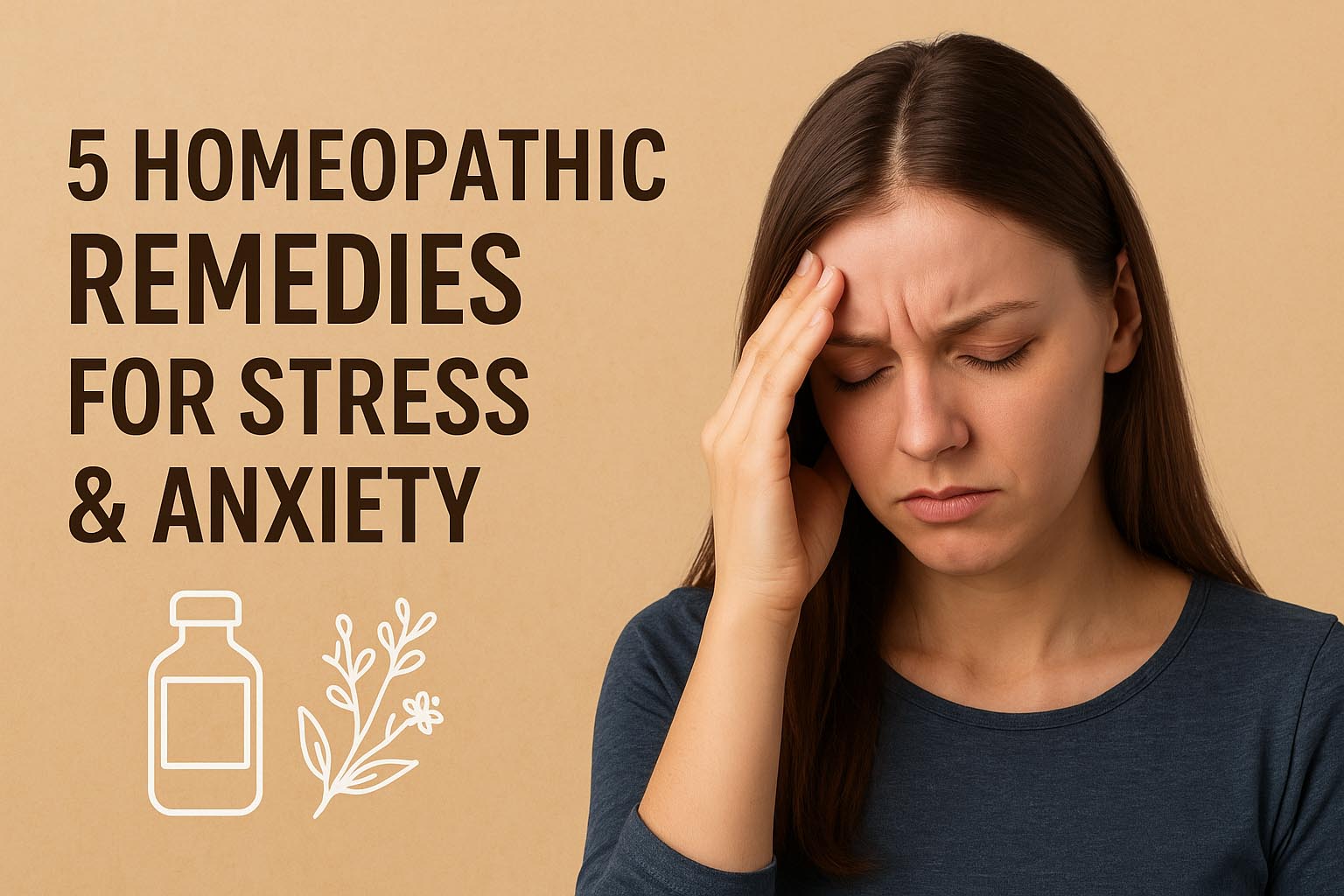
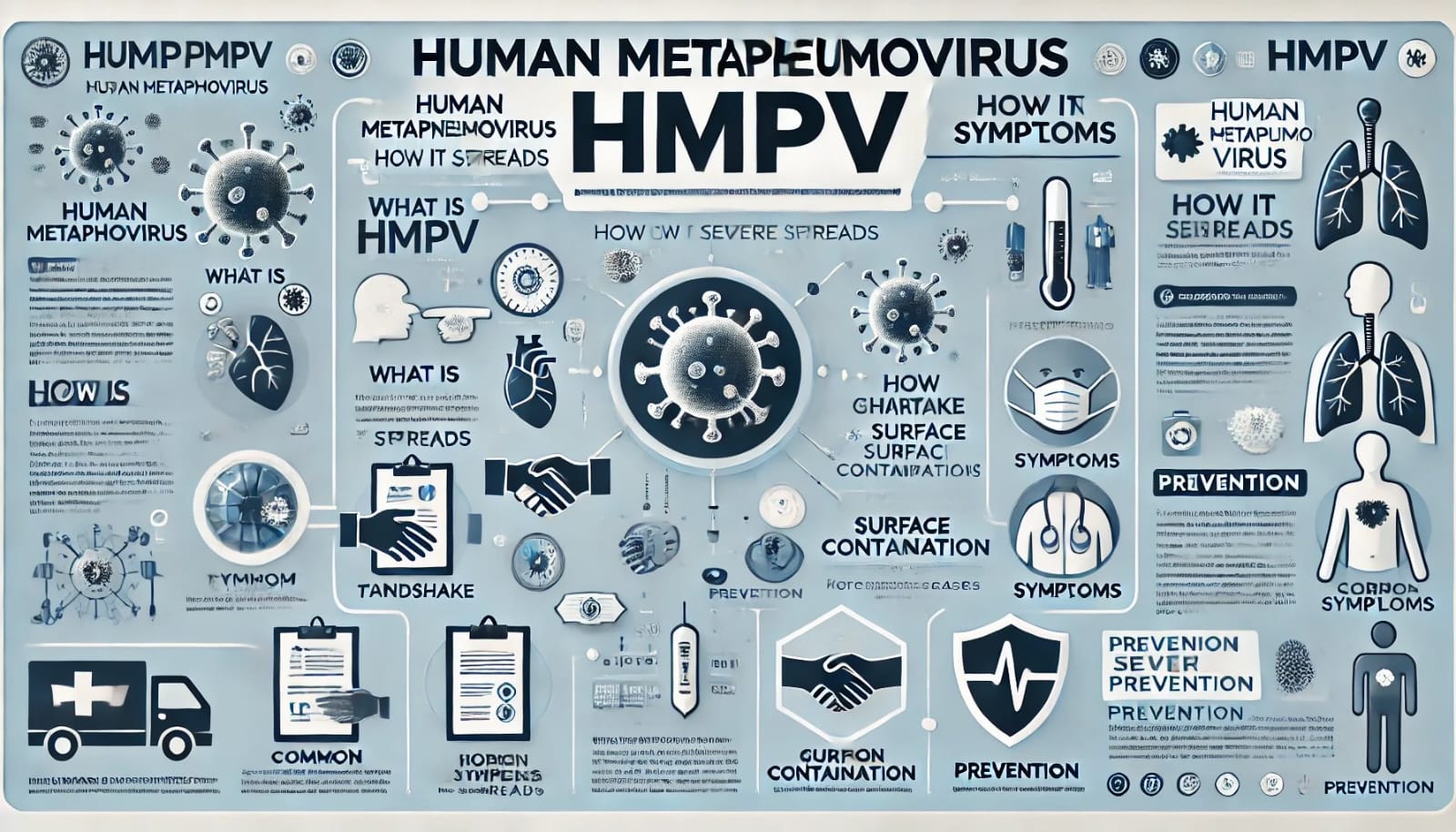
Human Metapneumovirus (HMPV)

Real-Life Success Stories: Homeopathy Case Studies Unveiled

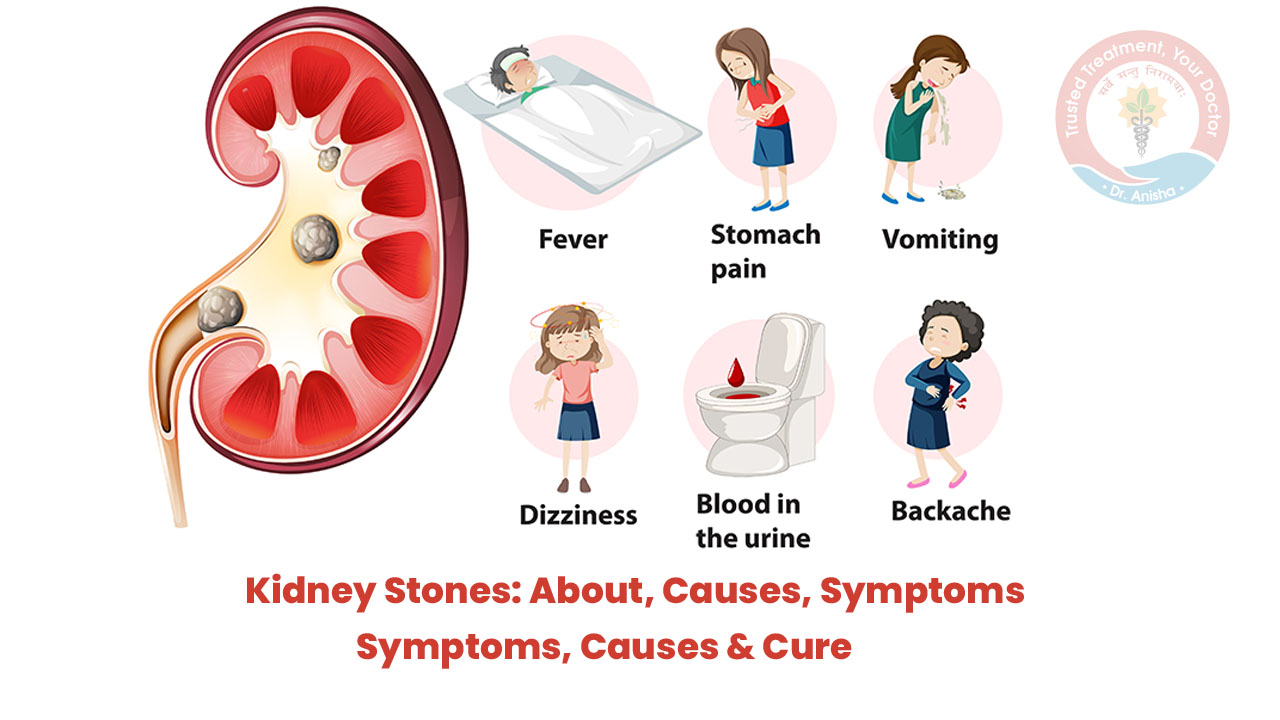

Discovery Of Homoeopathy
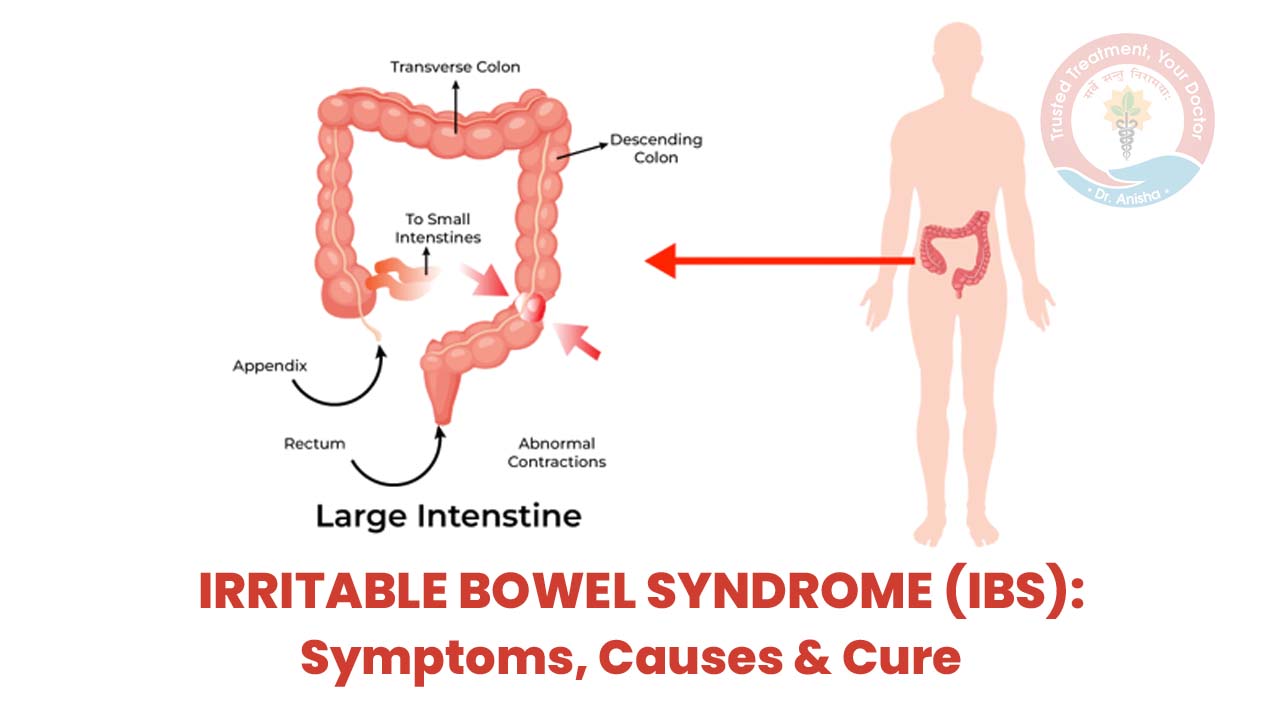
IRRITABLE BOWEL SYNDROME (IBS): Symptoms, Causes & Cure
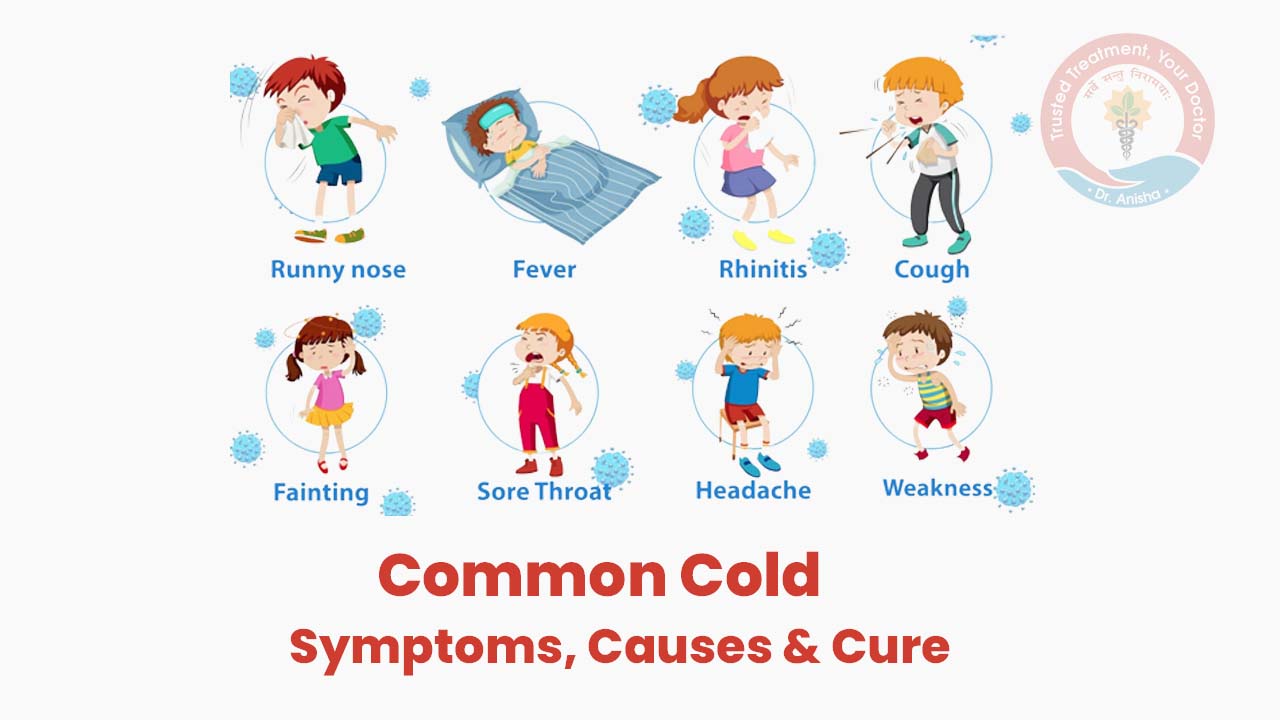
Common Cold: Symptoms, Causes & Cure

